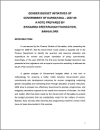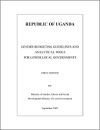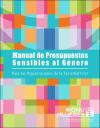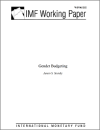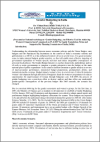FOUND 311 RESULTS
The gender assessment conducted in Macedonia attempts to analyze the implementation of the social policy at the local level in three municipalities by identifying to what extent those policies reflect the local needs of men and women, and whether the measures they propose will advance gender equality. The assessment aims to enhance the debate on gender equality issues, and to enable individuals, organizations, policy makers and policy analysts to effectively participate in the development of approaches which would increase the gender responsiveness of social policies.
The booklet produced by NEWW-Polska in 2005, is a report outlining the results of the Gender Budget analysis in Gdansk, Poland. The report provides a detailed discussion of the demographic, education, health and local labor structures in Gdansk. In addition to providing gender budgeting methods and tools used in other countries, the synopsis outlines three selected issues of Gdansk society and presents recommendations which may serve as aids in planning budgets in the region. Central...
Following a commitment by the Finance Minister of Karnataka to create a separate cell in the Finance Department tasked with identifying the quantum and resource allocation and expenditure for women, the first ever Gender Budget document was presented in the year 2007-08 at the Legislature with a hope to improve the sensitivity to address the issues which concerns women.
In India, Gender budgeting as a distinct tool was institutionalized by the introduction of gender budgeting statement in the Union Budget 2005-06. This paper tries to trace the steps taken in this direction by analyzing the pattern of resource allocation under gender budgeting with an in-depth analysis of schemes included in Union Budget 2007-08.
The purpose of this paper is to sharpen the understanding of the linkages between gender equality, poverty reduction and Africa's development and to scrutinize ways in which these linkages can be reflected into policy formulation and public resource expenditure towards meeting the BPFA, MDGs, thus paving the way for a sustainable development of the Continent as envisioned by NEPAD. In so doing, gender budgeting will be used as the main pathway to gender equality and African development.
The Gender Budgeting guidelines have been developed to address the current deficiencies in gender budgeting. They aim to provide LLG stakeholders with a systematic way of developing budgets that address the need of females and males equitably. They provide the tools and methodology on how LLG stakeholders can undertake Gender Budgeting.
UN Women prepared this manual to aim members of women's organizations at a community level who seek to influence public policy in local governments. The manual is a tool that can be used on-awareness training sessions to promote opportunities for participation and advocacy.
This IMF Working Paper examines how public processes can contribute to improving women's status. Gender budgeting, which refers to the systematic examination of budget programs and policies for their impact on women, has been tried in a range of countries in recent years. This study attempts to show that gender budgeting is just good budgeting; budgeting that properly accounts for the positive externalities that are derived from improving women's opportunities for health care, education, and...
Gender Budgeting in India by Dr. Vibhuti Patel was presented at a National workshop on Gender Budgeting: An Effective Tool for Achieving Women's Empowerment, organised on 15-4-2007 by Equity Foundation, Patna and Supported by Planning Commission of India, Delhi.
This publication by the Nordic Council of Ministers Copenhagen 2006 is the final report from the project Gender Budgeting 2004-2006, in which the five Nordic governments included in this project report their work. These countries have undertaken both pilot projects and other de-velopment work during the project period. The report also includes a summary of the gender analysis and gender impact assessment methods developed and used in the Nordic countries. The main conclusions and experiences are...


